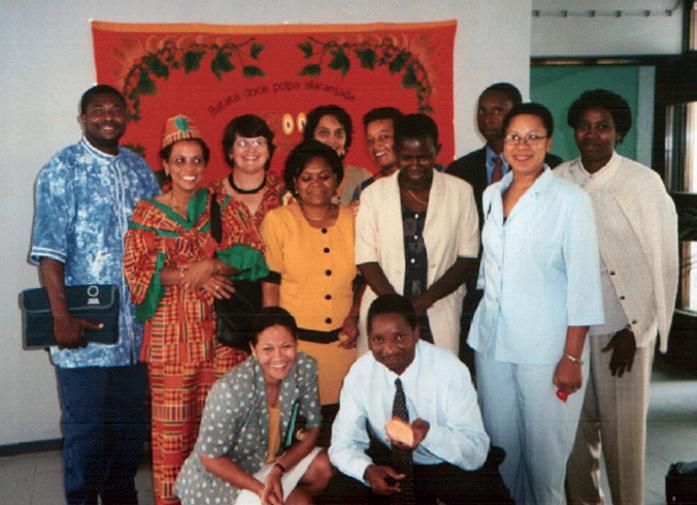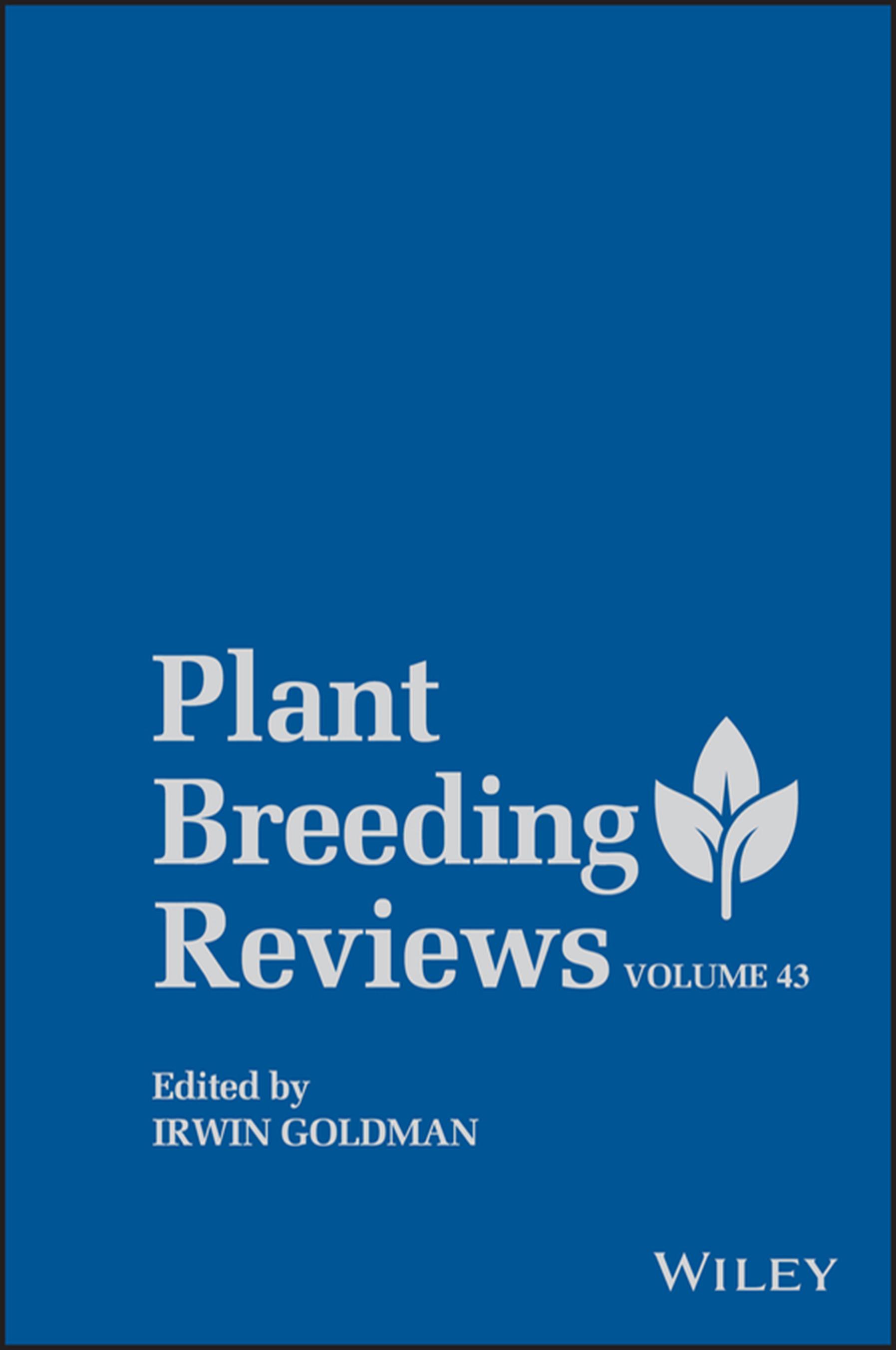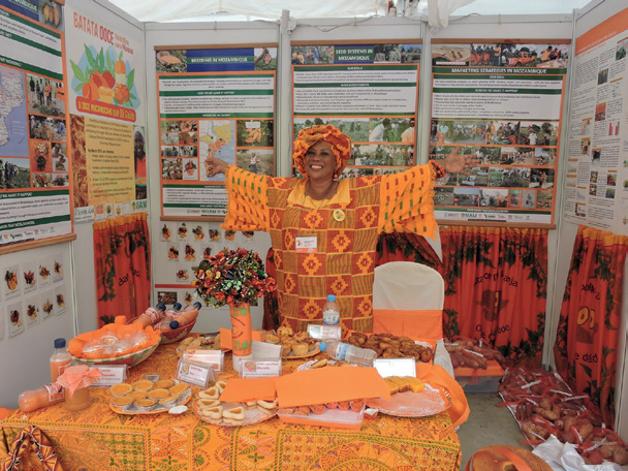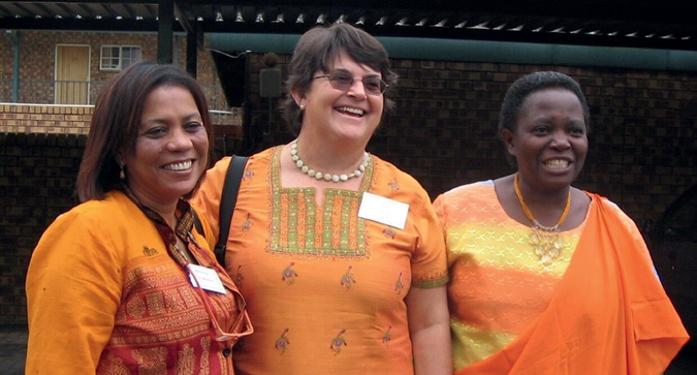Plant Breeding reviews
edited by irwin goldman
this edition first published 2020 © 2020 John wiley & sons, inc.
all rights reserved. no part of this publication may be reproduced, stored in a retrieval system, or transmitted, in any form or by any means, electronic, mechanical, photocopying, recording or otherwise, except as permitted by law. advice on how to obtain permission to reuse material from this title is available at http://www.wiley.com/go/permissions.
the right of irwin goldman to be identified as the author of this editorial material has been asserted in accordance with law.
Registered Office
John wiley & sons, inc., 111 river street, Hoboken, nJ 07030, Usa
Editorial Office
the atrium, southern gate, Chichester, west sussex, PO19 8sQ, UK
For details of our global editorial offices, customer services, and more information about wiley products visit us at www.wiley.com.
wiley also publishes its books in a variety of electronic formats and by print‐on‐demand. some content that appears in standard print versions of this book may not be available in other formats.
Limit of Liability/Disclaimer of Warranty while the publisher and authors have used their best efforts in preparing this work, they make no representations or warranties with respect to the accuracy or completeness of the contents of this work and specifically disclaim all warranties, including without limitation any implied warranties of merchantability or fitness for a particular purpose. no warranty may be created or extended by sales representatives, written sales materials or promotional statements for this work. the fact that an organization, website, or product is referred to in this work as a citation and/or potential source of further information does not mean that the publisher and authors endorse the information or services the organization, website, or product may provide or recommendations it may make. this work is sold with the understanding that the publisher is not engaged in rendering professional services. the advice and strategies contained herein may not be suitable for your situation. You should consult with a specialist where appropriate. Further, readers should be aware that websites listed in this work may have changed or disappeared between when this work was written and when it is read. neither the publisher nor authors shall be liable for any loss of profit or any other commercial damages, including but not limited to special, incidental, consequential, or other damages.
Library of Congress Cataloging‐in‐Publication Data
name: goldman, irwin, 1963– editor.
title: Plant breeding reviews / edited by irwin goldman.
description: First edition. | Hoboken, nJ : wiley, 2020. | includes bibliographical references and index.
identifiers: lCCn 2019026412 (print) | lCCn 2019026413 (ebook) | isBn 9781119616733 (hardback) | isBn 9781119616757 (adobe pdf) | isBn 9781119616771 (epub)
subjects: lCsH: Plant breeding–research. | Plant breeders–research. Classification: lCC sB123 .P552 2020 (print) | lCC sB123 (ebook) | ddC 631.5/2–dc23
lC record available at https://lccn.loc.gov/2019026412
lC ebook record available at https://lccn.loc.gov/2019026413
Cover design: wiley
Cover illustration: © browndogstudios/getty images
set in 10/12pts Melior by sPi global, Pondicherry, india
1.
VI. Usefulness of Components of the Ethylene‐Response Pathway for Delay of Fruit Ripening
VII. Fruit‐Ripening Delay Based on Manipulation of Upstream Transcription Factors
4 Breeding Naked Barley for Food, Feed, and Malt
Brigid Meints and Patrick M. Hayes
I.
IV. Selecting for β‐Glucan and Starch
V. Feed Barley Breeding and Quality
VI. Food Barley Breeding and Quality
VII. Malting Barley Breeding and Quality
5 The Foundations, Continuing Evolution, and Outcomes from the Application of Intellectual Property Protection in Plant Breeding and Agriculture 121 Stephen Smith
I. Intellectual Property, Intellectual Property Rights, and the Thesis Underlying this Review 125
II. The Philosophical Basis of IP and IPR and the need to Establish Appropriate Balances
III. Intellectual Property, Intellectual Property Rights, and their Associations with Plant Breeding and Agriculture 133
IV. The Global Framework within which IPR Applicable to Plant Breeding Resides 143
V. The Development of Formal Mechanisms of Intellectual Property Rights for Plant Varieties and Plant‐Related Subject Matter 148
VI. Forms of Intellectual Property Protection Available to Plant Breeders and Trait Developers 156
VII. Associations Between IP Systems and the Generation
6 The Use of Endosperm Genes for Sweet Corn Improvement: A review of developments in endosperm genes in sweet corn since the seminal publication in Plant Breeding Reviews, Volume 1, by Charles Boyer and Jack Shannon (1984)
William F. Tracy, Stacie L. Shuler, and Hallie Dodson‐Swenson
Endosperm Mutants, Germination, and Seedling
7 Gender and Farmer Preferences for Varietal Traits: Evidence and Issues for Crop Improvement
Eva Weltzien, Fred Rattunde, Anja Christinck, Krista Isaacs, and Jacqueline Ashby I.
III.
8 Domestication, Genetics, and Genomics of the American Cranberry
Nicholi Vorsa and Juan Zalapa
I. Domestication and Breeding
V. Traits of Interest
VI. Heritability of Traits
VII. Molecular Markers
VIII. nuclear and organellar Genome Assembly
IX. Linkage Mapping and SnP Markers
X. Marker‐Trait
Images and Descriptions of Cucurbita maxima in Western Europe in the Sixteenth and Seventeenth Centuries
Alice K. Formiga and James R. Myers
I. Introduction
II. Challenges of Identifying Cucurbits in Historical
III. Distinguishing Cucurbita maxima
IV. Where was Cucurbita maxima Present in South America Before the Arrival of Europeans and how Early Could it have Arrived in Europe?
V. Cucurbita maxima in Herbals and Botanical and Agricultural Books
VI. Cucurbita maxima in Art
VII. Cucurbita maxima in Botanical Paintings
VIII. Cucurbita maxima in Genre Paintings and Still Lifes
IX. Conclusion and Future Prospects
Contributors
Jacqueline Ashby
Senior consultant, Gender and Breeding Initiative (GBI), CGIAR Research Program on Roots, Tubers and Bananas
Edward Carey
Sweetpotato Breeder, International Potato Center, Kumasi, Ghana
Anja Christinck
Seed4change, Research & Communication, Gersfeld, Germany
Matthew D. Clark
Department of Horticultural Science, University of Minnesota‐Twin Cities, St. Paul, MN, USA
Hallie Dodson‐Swenson
Syngenta Seeds, Wilmington, DE, USA
Alice K. Formiga
Department of Horticulture, Oregon State University, Corvallis, OR, USA
Haya Friedman
Department of Postharvest Science of Fresh Produce, Agricultural Research Organization (ARO), the Volcani Center, Bet Dagan, Israel
Patrick M. Hayes
Department of Crop and Soil Science, Oregon State University, Corvallis, OR, USA
Krista Isaacs
Michigan State University, East Lansing, MI, USA
Jan W. Low
Principal Scientist and Co‐leader of the Sweetpotato for Profit and Health Initiative, International Potato Center, Nairobi, Kenya
Brigid Meints
Department of Crop and Soil Science, Oregon State University, Corvallis, OR, USA
James R. Myers
Department of Horticulture, Oregon State University, Corvallis, OR, USA
Fred Rattunde
Department of Agronomy, University of Wisconsin–Madison, Madison, WI, USA
Stacie L. Shuler
Syngenta Crop Protection, Slater, IA, USA
Stephen Smith
Department of Agronomy, Iowa State University, Ames, IA, USA
William F. Tracy
Department of Agronomy, University of Wisconsin–Madison, Madison, WI, USA
Nicholi Vorsa
Blueberry and Cranberry Research and Extension Center, Rutgers University, Chatsworth, NJ, USA
Eva Weltzien
Department of Agronomy, University of Wisconsin–Madison, Madison, WI, USA
Juan Zalapa
USDA‐ARS, Vegetable Crops Research Unit, Department of Horticulture, University of Wisconsin–Madison, Madison, WI, USA
Maria Isabel Andrade: Sweetpotato Breeder, Technology Transfer Specialist, and Advocate
Jan W. Low
Principal Scientist and Co‐leader of the Sweetpotato for Profit and Health Initiative, International Potato Center, Nairobi, Kenya
Edward Carey
Sweetpotato Breeder, International Potato Center, Kumasi, Ghana
ABSTRACT
Dr. Maria Isabel Andrade has not followed the more typical path of being a breeder in an academic institution or a private company. She developed a passion for a crop long neglected by the world, sweetpotato, in large part because it is a crop of the poor, predominantly cultivated by women in Sub-Saharan Africa. Hence, to be able to breed, she had to become on advocate for the crop, demonstrating its practical potential to not only address food insecurity but that the orange types, largely unknown in Sub-Saharan Africa (SSA), could also effectively tackle vitamin A deficiency. Most of her career has been spent in Mozambique, where her tireless efforts to develop and deliver improved drought-tolerant orange-fleshed sweetpotato varieties have been a model for others to emulate. Her ability to recognize the importance of collaborating with nutritionists and agricultural economists to develop innovative mechanisms to ensure that the improved orange-fleshed varieties could make a difference to human health and wealth has resulted in growing awareness and recognition of the concept of biofortification, that is breeding for enhance micronutrient quality in staple crops. As a collaborative member of the breeding team at the International Potato Center, she has demonstrated that an innovative accelerated breeding scheme could effectively deliver quality varieties. Over the years, she has mentored hundreds of staff members and students, helping
Plant Breeding Reviews, Volume 43, First Edition. Edited by Irwin Goldman.
to build a community of practice that recognizes that for scientists to make a difference in SSA, they must stretch their mandate and engage in delivery and often advocacy. This chapter describes the evolution of this unique career of a most amazing woman driven by her faith in god and the power of agriculture to improve nutrition among those most in need.
KEYWORDS: sweetpotato, Africa, Mozambique, breeding, accelerated breeding, drought tolerance, orange-fleshed, vitamin A, advocacy
I. EARLY YEARS
II. RESEARCH FOR DEVELOPMENT
A. Technology Transfer in the First Decade
B. Building the Evidence Base Through Collaborative Research
C. Breeding in Africa for Africa
III. THE ADVOCATE AND TEAM PLAYER
IV. THE MENTOR AT WORK AND IN HER COMMUNITY
V. AWARDS AND SERVICE
A. Awards
B. Boards and Other Representation LITERATURE CITED PUBLICATIONS
A. Articles and Chapters
B. Papers at Workshops
C. Project Reports
Maria Andrade in an Exhibition Booth on Sweetpotato Research in Mozambique at the Conference held in Kigali, Rwanda in 2015 (credit: J. Low).
ABBREVIATIONS
ABS Accelerated Breeding Scheme
AGRA Alliance for a Green Revolution in Africa
AVRDC World Vegetable Center
CGIAR Referred to just by its acronym since 2010, but formerly meant Consultative Group for International Agricultural Research
CIAT Centro International de Agricultura Tropical: International Center for Tropical Agriculture
CIP International Potato Center
FAO Food and Agriculture Organization (United Nations)
IDRC International Development Research Center
IIAM Instituto de Investigação Agrária de Moçambique: National Agrarian Research Institute (2004 to date)
INIA Instituto Nacional de Investigação Agronómica, National Institute of Agronomic Research, Mozambique
INIA National Agriculture Research Institute, Cabo Verde
IITA International Institute of Tropical Agriculture
NIRS Near‐Infrared Spectrometer
NGOs Non‐governmental organizations
OFSP Orange‐fleshed sweetpotato
SARRNET Southern Africa Root Crop Research Network
SASHA Sweetpotato Action for Security and Health in Africa
SETSAN Technical Secretariat for Food Security and Nutrition in Mozambique
SPHI Sweetpotato for Profit and Health Initiative
SSA Sub‐Saharan Africa
SUN Scaling Up Nutrition
USAID United States Agency for International Development
VAD Vitamin A deficiency
I. EARLY YEARS
Maria Isabel Vaz de Andrade was born on July 28, 1958, to Maria Vaz Andrade, in the town of São Filipe, on the small Island of Fogo, Cape Verde. She was the seventh of 10 children to her mother and the eleventh of 14 children to her father, a man so renowned for his work ethic that there is a song about him: “If you look for someone rich, don’t go to Francisco Andrade, but if are looking for a hardworking man, go to him.” Her father was a seafarer and, later, a shop owner on Fogo, and her mother sold homemade pastries in the town. Because of her
parents’ hard work, the family never went hungry, supplementing their modest incomes with maize, cassava, beans, squash, sweetpotato, and watermelon grown on a small rented plot, often re‐planting the maize due to unreliable rains in the dry climate. Maria knew early that she would go into agriculture, and at the age of five refused to go to the store to buy butter for her mother to make a cake, swearing that she was going to study coffee and leave and work in Angola to help her family and change the life of people who suffer from hunger in Africa. She did get a gentle spanking from her father for that bit of impertinence.
Maria’s parents emphasized food, nutrition, and education for their children, recognizing that education was the key to a successful future. At the local grade school, Maria learned addition and subtraction quickly, using chalk on a slate tablet. When she was 15 years old, Maria left Fogo for the first time when she moved to Santiago, the capitol, to attend high school, returning home only for summer vacations. She lived with her older brother Braz and his family, who cared for her and shared the work ethic of their father. For example, after getting 85% on a physics exam, she hurried to her brother’s workplace hoping to be rewarded for her success, but her brother was not sympathetic, asking her why she didn’t do better. As a result, she improved.
After receiving her high school diploma in 1978, Maria taught math and natural science at the high school level from 1978 to 1980, where she quickly realized that enthusiasm and commitment are key to success, inspiring students and being inspired by what they could do together. She had an opportunity to study medicine in France via Senegal, but was interested in studying in the United States, idolized as “Mecca” by most Cape Verdeans, and in 1980 received a scholarship from the African American Institute to study agronomy at the University of Arizona in Tucson. As an undergraduate, she was fortunate to be exposed to an outstanding teacher and researcher, Dr. Albert K. Dobrenz, whom she worked for as an undergraduate, helping with drought response trials of maize, among other things. Completing her bachelor’s degree in 1984, she quickly completed her masters with a thesis on the genetics of guar under Dr. Ray at the University of Arizona, before returning to Cape Verde to a position in the National Institute of Agricultural Research (INIA in Portuguese), Cape Verde.
Life on a university campus in the USA in the early 1980s was an eye‐opener for Maria, but she kept her focus on working hard to make the most of her good fortune. Maria was able to enjoy the wonderful international social life, forging friendships and professional ties that would be important later in her career. Among her peers, Maria was famous for having a great time dancing, without needing to drink alcohol. While at
the University of Arizona, she married her high school sweetheart, who would be the father of her two daughters.
When she returned to Cape Verde, it took some time to identify root crops as an important area where she could devote her career energies. She had wanted to work in plant pathology, but the position was already occupied. Her Director, Horacio Soares, a great supporter, assigned her to the maize program under Carlos Silva, but soon it became clear that the career opportunities in the maize program were limited. Tomato improvement was another possibility offered, but Maria was interested in working on important staple food crops for the people of her country. She was a member of a cohort of agricultural staff who had trained at the University of Arizona. The University’s relationship with Cape Verde also involved placing a faculty mentor, Vicky Makariam, in the country to provide mentoring and guidance to the recent graduates. Knowing the importance of cassava and sweetpotato in the Cape Verdean diet, Maria decided to set up a program in this area. At the University of Arizona, Maria also interacted with Marcio Porto, an agronomist and plant physiologist who would later head the cassava program in Brazil and go on to work for Centro International de Agricultura Tropical (CIAT), whose regional office in Africa was based at the International Institute of Tropical Agriculture (IITA) in Nigeria. He recognized the potential in this area. Her Director and faculty mentor were supportive. The next years (1985 to 1989) kept her busy assembling and evaluating germplasm collections for each crop and developing and disseminating recommended agronomic practices to extension services. During this time, she supervised graduate students, served on thesis defense committees, and participated in short courses on cassava multiplication and breeding at IITA. Also, in 1987, Maria gave birth to her first daughter, Tania.
During this period, Maria learned about the need for sensitivity, patience, and respect when dealing with farmers. A memorable example is when the African Cassava Mosaic Virus had been identified in the country, and by quick action Maria and a colleague concluded it could be eliminated by destruction of the cassava crop in the affected area. The team drove out to the affected area in their shiny pickup trucks and explained to the farmers what was going to happen. The farmers politely, but firmly, informed them that any large‐scale destruction of their important food crops would result in a large‐scale destruction of Maria and her colleagues! The team left, and over the course of time, developed other solutions, including the identification and deployment of resistant varieties.
With the focus on root crops, the opportunity to study for the PhD soon arose, and in 1989, Maria enrolled at North Carolina State University
for a degree in Plant Breeding and Plant Physiology under the guidance of Dr. Wanda Collins, the sweetpotato breeder there. Wanda was a role model and mentor, demanding hard work, but also providing support when things did not go as planned. Her thesis, titled Physiological basis of yield stability in sweetpotato, was co‐supervized by Dr. Raper, a physiologist. At North Carolina, Maria’s leadership skills and responsibility were recognized as she served stints as the Secretary of the African Students Association and as the Secretary of the Graduate Students Association in the Department of Horticulture. Once again, Maria would interact with peers and develop relationships that would last a lifetime. While in Arizona she had been largely oblivious to the scourge of racism, she did not escape from North Carolina completely naïve, but when treated with anything other than respect, she took her business elsewhere. Maria completed her research in 1993 and returned to Cape Verde to resume her leadership of the national root crops program, and complete her thesis write‐up. She returned briefly to the USA to give birth to her second daughter, Emalisa, in September 1993, and in 1994 she was awarded the PhD.
With a doctorate under her belt and the importance of root crops increasingly recognized, Dr. Andrade joined the FAO as a National Expert with the Root and Tuber Crops Program, where she continued to support the work of the Cabo Verdean national root and tubers program. This productive period saw the release of cassava and sweetpotato varieties, the development of systems for the maintenance and dissemination of high‐quality planting materials to farmers, the implementation of hybridization and selection programs for both cassava and sweetpotato, and training of national scientists and technicians. In addition, she interacted with IITA and the International Potato Center (CIP) and AVRDC1 to introduce new cassava and sweetpotato germplasm to Cape Verde. During a study tour to IITA with national program colleagues, Maria met the head of cassava breeding at IITA at that time, Dr. Alfred Dixon, who told her that IITA was looking for a regional agronomist to be based in Mozambique (like Cape Verde, a Portuguese‐speaking country) under the Southern African Root Crops Research Network, a project that IITA was managing with CIP providing expertise on sweetpotato. Maria, who had just become a single mother, applied for the position, fought strongly to overcome skepticism by the largely male search committee about her potential for success with the job, but fortunately succeeded, most likely due to the support of Dr. Margaret Quinn,
1 AVRDC is now known as the World Vegetable Center.
IITA’s Director of the Crop Improvement Division. Maria, with her two little girls, moved to Maputo to embark on the work of a lifetime.
During her time with IITA in Mozambique, there were some great supporters and influences who helped her to overcome many challenges both in the professional and personal realms. Dr. Andrew Uriyo, one of the managers of SARRNET based at IITA, was a consistent supporter and Dr. Michael Bassey, Director of International Cooperation, provided formative advice and counseling that would help to shape Maria’s mission. Dr. Bassey, who had previously worked for the Canadian International Development Research Center (IDRC), knew of the potential for nutritious crops (in this case, a soybean utilization project they had funded in Nigeria) to make a large difference when researchers developed their skills in technology transfer to ensure that farmers benefit directly from research results. He was also strong in his support of the need for women to be given the opportunity to take a leading role in improving food security. This vision was an affirmative guide to Maria’s work and provided moral support throughout her professional life. Further, Maria’s hard work and fiery capacity to get things done was recognized and supported by Dr. Rodomiro Ortiz, Deputy Director of Research and Director for Research for Development at IITA, in the first half of the 2000s. Maria’s life also took a decisive turn in 1996, when she met her colleague to be, Dr. Jan Low. As Maria says, Jan, an agricultural economist, “also taught me the real value of very hard work.”
A powerful faith in God plays a very strong role in Maria’s life. This became particularly important during the early years in Mozambique. The hard‐working single mother with two small children to raise in a new environment, thought it would be best to take her children to the Catholic church, just next door to her house, where they could stay late if she needed to work late. However, Maria realized that she needed to monitor the children’s experiences a little more closely, particularly when a friend from the church inquired about the failing health of her child’s grandmother, who one child had said lived with them and said needed an extra gift from the church, which the child happily received on grandma’s behalf. In truth, Grandma was living back in Cape Verde and was in very good health.
II. RESEARCH FOR DEVLOPMENT IN SOUTHERN AFRICA
A. Technology Transfer in the First Decade
Maria Andrade’s 22‐year relationship with Mozambique began in 1996, when she joined the International Institute for Tropical Agriculture
(IITA) as their regional cassava and sweetpotato agronomist for the Southern Africa Root Crop Research Network (SARRNET).2 This was a United States Agency for International Development (USAID) funded network run by IITA, which among the Consultative Group for International Agricultural Research (CGIAR) is responsible for cassava in SSA, and the International Potato Center (known by its Spanish acronym CIP), the CGIAR center responsible for sweetpotato. At the time of her arrival, Mozambique had been at peace for just four years, following a brutal and destructive 16‐year civil war. Her office was based in the Instituto Nacional de Investigação Agronómica (INIA), whose staffing and infrastructure had suffered considerably during the war years. The Government was committed to rebuilding, but operating conditions both at the station and in the field were challenging. In fact, her predecessor in the position just lasted one year before resigning.
Cassava was the major food crop in Mozambique, followed by maize. Sweetpotato was the fifth most important food crop in the country. In other Southern African countries at the time, maize was the dominant staple, followed by cassava. Sweetpotato was widely grown, but typically on small plots with a major constraint being lack of access to sufficient planting material, particularly after a dry season lasting 4–6 months.3 In the 1990s, there were few resources for breeding, and those that existed were concentrated on maize. The decade of the 1990s is renowned for declining investment in agriculture in general and overseas development assistance for agriculture in particular. Hence, both IITA and CIP were breeding at their headquarters in Nigeria and Peru, respectively, with promising clones from those programs and other sources around the world sent to Mozambique for varietal selection. The network concept was built on the idea that critical research could be undertaken by selected countries with results shared by all, to efficiently utilize very limited financial resources. Cassava received about 70% of the operational funds; sweetpotato just 30%.
A major achievement during this period was Maria’s efforts to assist INIA to revive Mozambique’s national root and tuber crop program. INIA had just two bachelor level staff at headquarters with no background in roots and tubers; this was true capacity strengthening from the ground up. The work also required collaborating with district level agriculture
2 Countries covered by SARRNET include Malawi, Zambia, Zimbabwe, South Africa, Swaziland, Lesotho, Botswana, Namibia, and Angola. Tanzania also participated but was not backstopped by Andrade as there was an agronomist based in Tanzania to do so.
3 Note that sweetpotato is propagated in the tropics using cuttings from vines, which are perishable.
extension agents and four non‐governmental organizations (NGOs), such as World Vision, that were engaged in food security projects. In addition, Maria backstopped eight other Southern African countries, visiting each country on average twice per year, in addition to the annual SARRNET partners’ meeting. Most country visits are straightforward, but in the case of Angola, a civil war was still on‐going. As part of a supervisory team for the Seeds of Freedom project (1998–2000) in collaboration with World Vision, it was necessary to fly into many multiplication sites as road travel was too dangerous. Strong stomachs were required, as pilots took off and landed at steep inclines to avoid missile attacks.
During this period, her direct boss at IITA, Rodomiro Ortiz, a geneticist leading the crop improvement division, provided excellent mentoring in research design and analysis, and in fundraising skills. Substantial support on network management came from Andrew Uriyo and Michael Bassey coordinating IITA’s efforts outside Nigeria. Ted Carey, from CIP’s regional office in Kenya, also provided sweetpotato clones for testing and collaborated with Maria in numerous joint training exercises. Thirty‐eight orange‐fleshed varieties arrived for selection in 1997 in Mozambique and were evaluated at INIA’s Umbeluzi station, just outside the capital, Maputo.
However, 1996 also marked the year of initiation of deep friendships and collaborations among a group sometimes referred to as the “Ladies in Orange” (Fig. 1.1). Being a divorced mother, with two young
Fig. 1.1. Three of the Ladies in Orange: (left to right) Maria Andrade, Jan Low, and Regina Kapinga (2007).
children, in a field dominated by men and needing to travel a third of your time cannot be easy. That year Maria Andrade connected with Jan Low, an agricultural economist working for the International Food Policy Research Institute, based in Mozambique, but who had just finished a post‐doctoral stint with CIP in Kenya and had developed a passion for orange‐fleshed sweetpotato. Then there was Lurdes Fidalgo, a nutritionist leading the nutrition division at the Ministry of Health, and, finally, Regina Kapinga, a Tanzanian agronomist who backstopped SARRNET efforts in Tanzania. All recognized the potential contribution of orange‐fleshed sweetpotato for reducing vitamin A deficiency, a major public health problem in SSA, but particularly severe in Mozambique, where 69% of children under five were vitamin A deficient. Given that the dominant sweetpotato varieties in SSA are white‐fleshed, lacking any pro‐Vitamin A (beta‐carotene), the marginal shift to orange‐fleshed types would supply a rich source of Vitamin A that could be grown by any farmer. Just 125 g (a small root) of most orange‐fleshed sweetpotato (OFSP) varieties provides the daily vitamin A needs of a young child.
Recognizing the need to address the underlying problem of insufficient vitamin A in the diet, Low and Fidalgo were instrumental in getting Helen Keller International to finance provincial level trials of OFSP varieties in 1998 that Maria had only been able to test at INIA headquarters due to funding limitations. The team convinced the donor that this was a necessary complementary action to the high‐dose vitamin A capsule distribution effort starting at the same time to help resolve the underlying problem of inadequate intakes of vitamin A. High‐dose capsules need to be administered every six months until the infant reaches five years of age. Promising results of OFSP varietal performance compared to local checks were presented at the Ministry of Agriculture and Rural Development in April 1999 (Fig. 1.2) at what probably was the first workshop promoting integrated agriculture‐nutrition strategies for addressing vitamin A deficiency. Subsequently, in July 1999, the government approved its Strategy for Combating Micronutrient Deficiencies, emphasizing both short‐ and longer‐term approaches for reducing iodine, iron, and vitamin A deficiencies. Nine OFSP varieties from the selection efforts were released later that year, the first in the country. However, there were no funds to multiply and distribute planting material or “seed” of these materials.
Then fate intervened. In February and March 2000, devastating floods hit southern and central Mozambique, killing 700 and leaving over 44,000 families homeless and many more with complete crop loss. Low and Andrade were able to capitalize on the OFSP varieties being available and OXFAM GB invested in the CIP‐INIA‐Ministry of Health

team to coordinate an effort that reached 108,000 affected households in the provinces of Gaza, Maputo, Inhambane, and Sofala. Over 47 hectares of multiplication plots were established, so that this distribution occurred in the 2000/2001 season. As the OFSP varieties can begin to be harvested at 3 months, this crop provided critical calories and nutrients during the hunger season. What was unique, however, was the collaboration with Fidalgo’s nutrition division to design a concurrent nutrition education campaign. In this campaign, community theater groups introduced the new OFSP type and its nutritional benefits. Decorated material worn as skirts, known as capulanas, were produced en masse that carried the slogan “O Doce que Dá Saúde”—the Sweet that Gives Health—and were distributed along with a radio campaign effort. In essence, this multidisciplinary effort turned disaster recovery into a development opportunity effort.
The success of the disaster response effort raised the interest of USAID‐Mozambique, who subsequently funded a 4.5‐year project at the level of $4.5 million dollars on Accelerated Multiplication and Distribution of Health Planting Materials of the Best High Yielding
Fig. 1.2. The presenters at the first multisector meeting concerning OFSP in Mozambique (1999) (Maria second from left, middle row).
Varieties of Cassava and Sweetpotato. The government of Mozambique itself contributed $1 million dollars to this work. Maria Andrade led this effort, collaborating with 124 partner organizations, with the dissemination effort for these two crops reaching 93 of Mozambique’s 141 districts across all provinces except Niassa. Maria trained and coordinated partners in improved rapid multiplication techniques that led to the establishment of over 500 hectares of conventional multiplication of cassava and sweetpotato plots across the country. A key mentor during this period was Malachy Akoroda, a root and tuber professor from Nigeria, who also had experience in large‐scale dissemination efforts. Over 1.3 million families received high‐quality planting material. Efforts were also made to promote diversified utilization of the crop (most sweetpotato roots in Mozambique are just steamed or boiled), with over 200 trainers of trainers instructed in how to make processed products and engage in market development. Varietal selection continued during this period, with 87 selection trials across major agro‐ecological zones being conducted. Yield studies during the period indicate that on‐farm yields of sweetpotato under the rain‐fed, unfertilized conditions faced by smallholder Mozambican farmers rose from 5.6 tons per hectare in 2001 to 11–13.6 tons per hectare in 2005. For cassava, average yields moved from 6.0 tons per hectare to 11–14 tons per hectare.
B. Building the Evidence Base Through Collaborative Research
To put the situation in context, during the 1990s the nutrition community was quite focused on resolving micronutrient deficiencies through providing periodic high‐dose supplements that did not require changing behaviors. There was very little evidence of the effectiveness of so‐called food‐based approaches as an effective way of tackling vitamin A deficiency. In 2002, Jan Low, now with Michigan State University, received a grant to conduct a proof‐of‐concept project4 to test whether using an integrated agriculture‐nutrition education‐marketing approach using OFSP as the key entry point could be an effective strategy for addressing vitamin A deficiency (VAD) among children under five years of age. Maria Andrade provided the OFSP varieties and collaborated on training the World Vision extensionists who implemented the agronomic intervention. The positive results demonstrating significant
4 The Towards Sustainable Nutrition Improvement (TSNI) project (2002–2005) was funded by the Micronutrient Initiative of Canada, USAID, the Rockefeller Foundation, and HarvestPlus.
increases in vitamin A intakes and a 15% reduction in VAD prevalence after an 18‐month intervention were key for demonstrating the potential impact of biofortification and integrated agriculture‐nutrition interventions (Low et al. 2017).
However, the need for breeding better OFSP in Mozambique instead of relying on successful varieties bred elsewhere emerged. The most well‐liked OFSP variety, ‘Resisto’, had excellent root yield, good taste, and a smooth, oval shape favored by traders. However, during the dry season, when sweetpotato is produced in valley bottoms where there is sufficient residual moisture, even though ‘Resisto’ produced far more roots than the local landrace ‘Canasumana,’ ‘Resisto’ had virtually no vines left at harvest time, whereas ‘Canasumana’ had abundant vines. Moreover, in 2005, after the study ended, there was a severe drought throughout most of the country for three consecutive seasons, resulting in the loss of over 50% of sweetpotato varieties. Logically, any varieties surviving this devastating drought became candidates for consideration as parents in breeding program to combat drought.
Armed with the positive nutrition findings and the clear need for breeding, Andrade convinced the Rockefeller Foundation to invest in a true breeding program for Mozambique5, including the training of national collaborator in breeding at the Masters’ level. Joe DeVries of the Rockefeller Foundation and a maize breeder became a long‐term supporter of Andrade’s work and committed to building up national sweetpotato breeding capacity across the region. The first crossing block was established at Umbeluzi in August 2005, with partner INIA having now been reformed to be IIAM—Instituto de Investigação Agrária de Moçambique. Prior to this, only the Ugandan and South African national programs had sweetpotato breeding programs established. Maria and her team traveled throughout the country to collect any sweetpotato varieties that had survived the prolonged drought. Fifty‐eight were collected and characterized. Eight of these landraces were included in the first polycross crossing block, consisting of 24 varieties.
C. Breeding in Africa for Africa
In 2006, Maria Andrade joined CIP, focusing henceforth only on sweetpotato and leading CIP’s country program in Mozambique, continuing dissemination efforts with an additional focus on processed product development. Three of the four “Ladies in Orange” were now in the
5 The two-year project (August 2005–July 2007) was entitled Breeding for beta-carotene rich drought-tolerant sweetpotato for the drought-prone areas of Mozambique.
same institutional home, with Regina Kapinga having joined in 2001 (based in Uganda) and Jan Low as Regional Director in late 2005. Moreover, CIP as an institution was strengthening its sweetpotato breeding effort and Maria Andrade was a critical addition to that effort. From its headquarters in Peru, Wolfgang Grüneberg led the team and Robert Mwanga joined CIP from the Ugandan national program in 2009. Edward Carey was hired to lead the breeding effort in West Africa in 2010, based in Ghana.
Recognizing the challenge in getting donors to fund breeding efforts that take 8–9 years to produce improved varieties, Grüneberg realized that by taking advantage of the vegetative nature of the crop, it would be possible to cut down the time from crossing to varieties submitted for release to 4–5 years instead of 8–9. It was named the Accelerated Breeding Scheme (ABS). Given that each seed generated through crossings is a potential variety, the first step is to make nine copies of each seedling in the screenhouse. Then it is possible to have three sites for the first observational trial instead of just one. Thus, the key to ABS is that there are more sites earlier in the breeding cycle, and at least one of those sites should be the stress environment of interest. Andrade began working closely with Grüneberg, testing the ABS approach in Mozambique beginning in 2006. The three initial sites include one highly drought‐stressed environment, one exhibiting virus pressure, and one with reasonable growing conditions in the Mozambican context. She succeeded in demonstrating that ABS was a viable approach, with the release of 15 drought‐tolerant OFSP varieties in 2011 (Andrade et al. 2016a), followed by seven additional varieties (four OFSP and three purple‐fleshed) in 2016 (Andrade et al. 2016b); that is, the completion of two cycles of breeding using the ABS approach (Fig. 1.3).
Beginning in 2009, CIP has been leading the 10‐year Sweetpotato Action for Security and Health in Africa (SASHA) project6, which provides substantial support to its population development efforts in Sub‐Saharan Africa. There are three sub‐regional sweetpotato support platforms that support high‐throughput quality breeding. Each of these platforms has a quality lab with a freeze drier and Near‐Infrared Spectrometer (NIRS) that can determine accurate dry matter, protein, carbohydrate, beta‐carotene, and sugar analysis in just two minutes, along with rough estimates of iron and zinc contents. All platforms have increasing dry matter and beta‐carotene contents as core trait breeding objectives, but the focus in the East and Central African program in Uganda is on
6 Funded by the Bill & Melinda Gates Foundation, with Jan Low as the project manager.
virus resistance, in the West African program in Ghana on low‐sugar sweetpotato, and in the Southern African program in Mozambique on drought tolerance. Each support platform backstops and provides virus clean‐up services and NIRS access to national programs breeding sweetpotato in their sub‐region. Maria Andrade leads the Southern African program and currently backstops sweetpotato breeders in Malawi, Zambia, Madagascar, South Africa, and Mozambique.
Building on the strong relationship Maria has with Joe Devries of the Rockefeller Foundation, which, together with the Bill & Melinda Gates Foundation, heavily invested in the creation of the Alliance for a Green Revolution in Africa (AGRA) in 2006, SASHA project manager Jan Low negotiated for AGRA to agree to support national sweetpotato breeding programs and training a cohort of sweetpotato breeders, which CIP breeders would backstop and support, including convening an annual Sweetpotato Breeders (now referred to as Speedbreeders) meeting as a learning and information exchange opportunity. This enabled the training of nine breeders at the doctoral level and two breeders at the
Fig. 1.3. Maria with her 2016 releases (credit: J. Low).

master’s level, including Jose Ricardo of IIAM in Mozambique. Maria specifically supports or collaborates with breeders in Malawi, Zambia, Madagascar, and South Africa7, providing seed to test, visiting their programs, and offering NIRS and virus clean‐up services upon request. These efforts have paid off, with 41 varieties released by the other Southern African countries since 2009, 30 of which are orange‐fleshed and 11 non‐orange‐fleshed. Moreover, two of the Mozambican varieties Maria bred were tested and released in Ivory Coast in 2015 and are performing well in the United Arab Emirates. Since 2015, she has also been sharing seed from her crossing program with a breeder in Bangladesh, attending an Asian sweetpotato breeders’ forum annually. As of 2018, there are 14 SSA countries engaged in the Sweetpotato Breeding Community of Practice (Fig. 1.4) and Maria Andrade serves as an inspirational example to all on what can be achieved.
Maria has long collaborated with Jose Ricardo of IIAM, with all varieties released as joint CIP‐IIAM products, but in 2014 a post‐doctoral fellow, Godwill Makunde, also joined her team. The challenge of breeding for drought‐tolerant varieties that can survive under smallholder management in different agro‐ecologies has led the team to
7 Note that Angola and Madagascar do varietal selection based on varieties received from CIP, whereas Malawi, Zambia, and South Africa have breeding programs. Malawi bred and released five OFSP and four non-OFSP varieties since 2009, Zambia four OFSP and one non-OFSP, and South Africa four OFSP and released one CIP-bread OFSP variety.
Fig. 1.4. Speedbreeders decked out in orange sunglasses at the 2015 annual meeting.
explore a broader range of traits needed by successful varieties than were originally present in the initial breeding program in 2006. These include:
Exploring vine survival after long dry spells (Andrade et al. 2017). Vine length and stem diameter are indicators for vine survival and are highly heritable. Varieties with erect (short) and thick stems had better survivability.
1. Nutritional quality and stability over successively later harvesting periods (Alvaro et al. 2018).
2. Ability to sprout after storage in the sand or in the ground. The number of sprouts can easily be determined, with high numbers being a desirable trait.
3. Good taste has proved to be a critical factor influencing adoption. The protocol for on‐farm assessment has become more detailed since 2005, capturing not just cooked appearance and taste but also starchiness and presence of fiber. Moreover, the appearance, taste, and tenderness of cooked leaves is assessed at approximately 90 days after planting.
Details describing advances in sweetpotato breeding methods applied in SSA have been described in detail in two book chapters (Grüneberg et al. 2015; Mwanga et al. 2017). Andrade is currently engaged in validating the concept of heterotic increments for both root and foliage yield in sweetpotato, maintaining two distinct breeding populations in Mozambique. In addition, there is an ongoing breeding effort in Mozambique to raise iron and zinc contents in OFSPs. Progress in raising iron contents is faster than in zinc. Non‐iron enhanced varieties have 1.8 mg/kg on average, whereas there are several clones above 4.0 mg/kg emerging from the 2017 trials. In 2018, the design of a study began to assess the bioavailability of the iron found in a clone with a 4.4 mg/kg iron content. If there is adequate bioavailability found, this would be a breakthrough in the ability to address iron deficiency, as the micronutrient problem is even more widespread than vitamin A deficiency. A multimeal feeding trial to establish bioavailability is scheduled for early 2019.
Note that dissemination efforts did not stop in Mozambique during the development of the breeding program, following the philosophy of “use the best you have while breeding for better.” Moreover, dissemination efforts in other SSA countries intensified under the auspices of the Sweetpotato for Profit and Health Initiative (SPHI), which was launched in 2009. The goal of the SPHI is to combat undernutrition and
improve incomes through providing 10 million African households in 17 target countries access to improved varieties of sweetpotato and their diversified use by 2020. Mozambique under Andrade’s guidance has been a leader in disseminating improved OFSP varieties at scale, with different projects utilizing different delivery models. She has traveled and trained extension personnel in all of Mozambique’s ten provinces and in all of its 141 districts, except one (Moma in Nampula province).
III. THE ADVOCATE AND TEAM PLAYER
The old saying that necessity is the mother of invention is true. Advocacy is defined as any action that argues for a cause. In many instances, scientists feel that if a clear argument or evidence is presented, wise governments and donors will invest. However, in the resourced constrained environment of Mozambique, sweetpotato in the 1990s was not a policy priority.
The uniting of the four “Ladies in Orange” was the critical mass needed to unleash a new way of doing advocacy in the world of the CGIAR. The color orange clearly represents the carotenoids found in Vitamin A rich foods as well as being a color of passion. Maria Andrade has been at the forefront of designing new ways to promote the OFSP. Mozambique was the first country to paint vehicles orange with the logo “O Doce que Dá Saúde” or “The Sweet that Gives Health.” As they moved through the countryside, people would approach asking what does it mean and where can I get the planting material? The capulanas have already been described, but in addition there have been hats, T‐shirts for adults and children, ties, and even fashion shoes. The campaign (Fig. 1.5) has included billboards, community theater, decorated market stalls, participation in national and provincial exhibitions, radio programs, and consistent television coverage. Maria engages consistently with government officials, particularly encouraging them to come to field events and exhibitions. Nothing is more convincing that watching a young child eat its first OFSP root—the look of enjoyment and the inevitable reach for another root.
Because of the April 1999 multisectoral meeting looking at the potential of OFSP, in July 1999 the Mozambican government approved its Strategy for Combating Micronutrient Deficiencies, emphasizing both short‐ and longer‐term approaches for reducing iodine, iron, and vitamin A deficiencies. The strategy for reduction of vitamin A deficiency argues forcefully for complementary approaches: the distribution of vitamin A capsules and interventions to improve diet quality, while at the same time increasing the number of calories consumed. In addition,
















